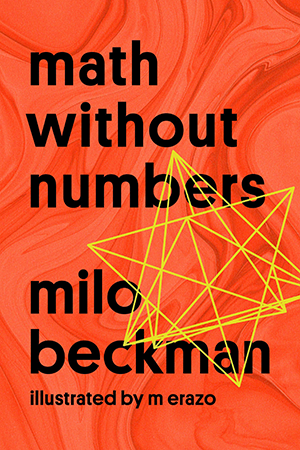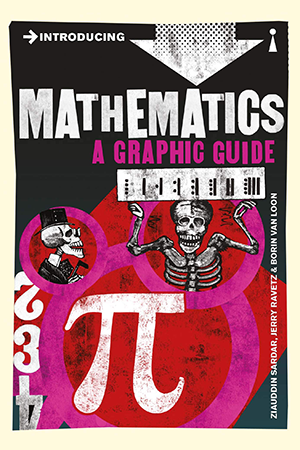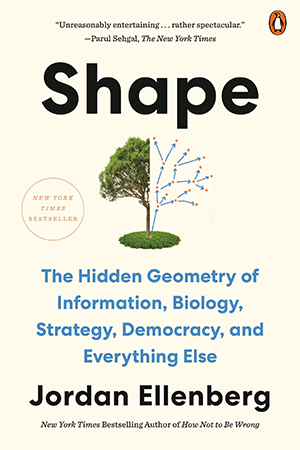
Library
Mathematics
Milo Beckman
Math Without Numbers
An illustrated tour of the structures and patterns we call math The only numbers in this book are the page numbers. Math Without Numbers is a vivid, conversational, and wholly original guide to the three main branches of abstract math—topology, analysis, and algebra—which turn out to be surprisingly easy to grasp. This book upends the conventional approach to math, inviting you to think creatively about shape and dimension, the infinite and infinitesimal, symmetries, proofs, and how these concepts all fit together. What awaits readers is a freewheeling tour of the inimitable joys and unsolved mysteries of this curiously powerful subject. Like the classic math allegory Flatland, first published over a century ago, or Douglas Hofstadters Godel, Escher, Bach forty years ago, there has never been a math book quite like Math Without Numbers. So many popularizations of math have dwelt on numbers like pi or zero or infinity. This book goes well beyond to questions such as: How many shapes are there? Is anything bigger than infinity? And is math even true? Milo Beckman shows why math is mostly just pattern recognition and how it keeps on surprising us with unexpected, useful connections to the real world. The ambitions of this book take a special kind of author. An inventive, original thinker pursuing his calling with jubilant passion. A prodigy. Milo Beckman completed the graduate-level course sequence in mathematics at age sixteen, when he was a sophomore at Harvard; while writing this book, he was studying the philosophical foundations of physics at Columbia under Brian Greene, among others.

Jerry Ravetz
Introducing Mathematics
What is mathematics, and why is it such a mystery to so many people? Mathematics is the greatest creation of human intelligence. It affects us all. We depend on it in our daily lives, and yet many of the tools of mathematics, such as geometry, algebra and trigonometry, are descended from ancient or non-Western civilizations. Introducing Mathematics traces the story of mathematics from the ancient world to modern times, describing the great discoveries and providing an accessible introduction to such topics as number-systems, geometry and algebra, the calculus, the theory of the infinite, statistical reasoning and chaos theory. It shows how the history of mathematics has seen progress and paradox go hand in hand - and how this is still happening today.

Jordan Ellenberg
Shape
From the New York Times-bestselling author of How Not to Be Wrong—himself a world-class geometer—a far-ranging exploration of the power of geometry, which turns out to help us think better about practically everything. How should a democracy choose its representatives? How can you stop a pandemic from sweeping the world? How do computers learn to play Go, and why is learning Go so much easier for them than learning to read a sentence? Can ancient Greek proportions predict the stock market? (Sorry, no.) What should your kids learn in school if they really want to learn to think? All these are questions about geometry. For real. If youre like most people, geometry is a sterile and dimly remembered exercise you gladly left behind in the dust of ninth grade, along with your braces and active romantic interest in pop singers. If you recall any of it, its plodding through a series of miniscule steps only to prove some fact about triangles that was obvious to you in the first place. Thats not geometry. Okay, it is geometry, but only a tiny part, which has as much to do with geometry in all its flush modern richness as conjugating a verb has to do with a great novel. Shape reveals the geometry underneath some of the most important scientific, political, and philosophical problems we face. Geometry asks: Where are things? Which things are near each other? How can you get from one thing to another thing? Those are important questions. The word geometry comes from the Greek for measuring the world. If anything, thats an undersell. Geometry doesnt just measure the world—it explains it. Shape shows us how.
